You are using an out of date browser. It may not display this or other websites correctly.
You should upgrade or use an alternative browser.
You should upgrade or use an alternative browser.
U-2 Thread
- Thread starter Mark Nankivil
- Start date
Anyone know what this Feb '68 CIA meeting with Kelly Johnson was (more specifically) referring to?
Some highlights:
Some highlights:
- Arrangements 'for *redacted* to visit the propulsion facility.. ..and witness some rocket motors in actual operation using OTTO II fuel.' (LPC initially quoted for engine/pumps)
- 'LAC existing plastics facility and specialists in plastics frabrication from the OXCART program will be used to fabricate the wings and tail surfaces'
- Wind tunnel tests not 'believed to be required for separation'
- 'The construction was dictated by minimum radar cross section which led to a metal fuselage and a plastic wing and tail'
- Tank insulation will maintain fuel at a useable temperature prior to ignition for eight hours
- 200 watts to be made available by 'additional batteries in the payload area'
- U-2R modification include 'trapeze, pylon etc.' and include 'a built-in checkout capability for pre-launch confidence'
- program intended to take advantage of existing U-2R test operation at Edwards AFB. 'Specific government support limited to fuel and spares for the U-2R and the drones'
Last edited:
- Joined
- 6 August 2007
- Messages
- 3,011
- Reaction score
- 2,307
Anyone know what this Feb '68 CIA meeting with Kelly Johnson was (more specifically) referring to?
Some highlights:
Apologies if it's already been discussed and I've missed it
- Arrangements 'for *redacted* to visit the propulsion facility.. ..and witness some rocket motors in actual operation using OTTO II fuel.' (LPC initially quoted for engine/pumps)
- 'LAC existing plastics facility and specialists in platics frabrication from the OXCART program will be used to fabricate the wings and tail surfaces'
- Wind tunnel tests not 'believed to be required for separation'
- 'The construction was dictated by minimum radar cross section which led to a metal fuselage and a plastic wing and tail'
- Tank insulation will maintain fuel at a useable temperature prior to ignition for eight hours
- 200 watts to be made available by 'additional batteries in the payload area'
- U-2R modification include 'trapeze, pylon etc.' and include 'a built-in checkout capability for pre-launch confidence'
- program intended to take advantage of existing U-2R test operation at Edwards AFB. 'Specific government support limited to fuel and spares for the U-2R and the drones'
Sounds a lot like TAGBOARD
Indeed, elements certainly do, but from a U-2R ? Senior Bowl was underway by then (although it's booster motor was LPC?)Sounds a lot like TAGBOARD
Last edited:
- Joined
- 19 February 2007
- Messages
- 1,102
- Reaction score
- 1,520
Can't be Tagboard, too big & heavy for launch from U-2R.
Interesting tidbits -
- Plastic wings and tail
- Otto II fuel is US Navy torpedo monopropellant.
- Rocket motor. (?)
- Trapeze launch - U-2R fuselage top or wing super pod station.
- Max mission time to launch - 8 hours (cold soak requirement)
Is this Aquiline related (competitor?)
Interesting tidbits -
- Plastic wings and tail
- Otto II fuel is US Navy torpedo monopropellant.
- Rocket motor. (?)
- Trapeze launch - U-2R fuselage top or wing super pod station.
- Max mission time to launch - 8 hours (cold soak requirement)
Is this Aquiline related (competitor?)
- Hybrid? Rocket motor. (?)
No idea, but don't think so!Is this Aquiline related (competitor?)
Last edited:
..and used by Aerojet in a mod'd AQM-37 in the early '80's !:- Otto II fuel is US Navy torpedo monopropellant.
A84-17862#
SYNTHESIS AND PERFORMANCE OF AN AIR-TURBORAMJET-PROPELLED SUPERSONIC TARGET VEHICLE
(AIAA PAPER 84-0075)
A modified version of the AQM-37 target vehicle was used in this study in expectation that integrating an Air-TurboRamjet (ATR) propulsion subsystem would provide safety and performance benefits relative to the existing AQM-37A target. The ATR propulsion subsystem allows utilization of relatively benign fuel (OTTO II) in place of the inhibited red fuming nitric acid/mixed amine fuel NO. 4 (IRFNA/MAF no. 4) bipropellant combination used in the current version of the AQM-37. Otto II provides more than twice the currently delivered specific impulse. Performance evaluations of the ATR-propelled target vehicle designs show capability for sustained low-altitude flight at Mach 1.5 and a powered flight range of more than 200 NM cruising at Mach 3.0, 80,000 ft. altitude when launched at Mach 1.5. 50,000 ft. altitude.
Last edited:
- Joined
- 6 August 2007
- Messages
- 3,011
- Reaction score
- 2,307
LPC == Lockheed Propulsion Company (formerly Grand Central Rocket Company).
Yup, they made the TAGBOARD booster
Scott Kenny
ACCESS: Above Top Secret
- Joined
- 15 May 2023
- Messages
- 5,965
- Reaction score
- 4,815
I don't know. But every takeoff has the U2 make a huge up angle and climb at an outrageous rate.How is that possible with a full fuel load?! I know it generates a lot of lift, but that seems like a ridiculous angle.
I mean, the U2 is basically a powered sailplane and makes so much lift that even with spoilers and airbrakes it doesn't want to land.
Scott Kenny
ACCESS: Above Top Secret
- Joined
- 15 May 2023
- Messages
- 5,965
- Reaction score
- 4,815
Almost anything is "relatively benign" compared to IRFNA.....and used by Aerojet in a mod'd AQM-37 in the early '80's !:- Otto II fuel is US Navy torpedo monopropellant.
A84-17862#
SYNTHESIS AND PERFORMANCE OF AN
AIR-TURBORAMJET-PROPELLED SUPERSONIC TARGET
VEHICLE
(AIAA PAPER 84-0075)
A modified version of the AQM-37 target vehicle was used in
this study in expectation that integrating an Air-TurboRamjet (ATR)
propulsion subsystem would provide safety and performance
benefits relative to the existing AQM-37A target. The ATR
propulsion subsystem allows utilization of relatively benign fuel
(OTTO II) in place of the inhibited red fuming nitric acid/mixed
amine fuel NO. 4 (IRFNA/MAF no. 4) bipropellant combination
used in the current version of the AQM-37. Otto II provides more
than twice the currently delivered specific impulse. Performance
evaluations of the ATR-propelled target vehicle designs show
capability for sustained low-altitude flight at Mach 1.5 and a
powered flight range of more than 200 NM cruising at Mach 3.0,
80,000 ft. altitude when launched at Mach 1.5. 50,000 ft. altitude.
OTTO II combustion products are highly toxic.
Mugs914
ACCESS: Restricted
- Joined
- 7 August 2009
- Messages
- 26
- Reaction score
- 60
- "Almost anything is "relatively benign" compared to IRFNA..."Almost anything is "relatively benign" compared to IRFNA...
OTTO II combustion products are highly toxic.
Hahaha... That reminds me of something someone said on a rocket propulsion forum when hydrazine was mentioned:
"Hydrazine is NOT radioactive... Thats the nicest thing I can say about it."
- "OTTO II combustion products are highly toxic."
I thought the Navy's torpedo monopropellant was basically high test peroxide, is that old tech now? I'm assuming OTTO II is completely different if its combustion products are that toxic.
(Please forgive my ignorance. I'm not up on the latest torpedo tech!)
- "Almost anything is "relatively benign" compared to IRFNA..."Almost anything is "relatively benign" compared to IRFNA...
OTTO II combustion products are highly toxic.
Hahaha... That reminds me of something someone said on a rocket propulsion forum when hydrazine was mentioned:
"Hydrazine is NOT radioactive... Thats the nicest thing I can say about it."
- "OTTO II combustion products are highly toxic."
I thought the Navy's torpedo monopropellant was basically high test peroxide, is that old tech now? I'm assuming OTTO II is completely different if its combustion products are that toxic.
(Please forgive my ignorance. I'm not up on the latest torpedo tech!)
Otto II fuel is more like a nitro based explosive in liquid form. Forgot the exact chemistry but it is completely unrelated to peroxide reactions.
Scott Kenny
ACCESS: Above Top Secret
- Joined
- 15 May 2023
- Messages
- 5,965
- Reaction score
- 4,815
OTTO II is a liquid monopropellant. Means it will burn even in deep space. Also means that most conventional firefighting methods will fail if a fuel spill catches fire.- "Almost anything is "relatively benign" compared to IRFNA..."Almost anything is "relatively benign" compared to IRFNA...
OTTO II combustion products are highly toxic.
Hahaha... That reminds me of something someone said on a rocket propulsion forum when hydrazine was mentioned:
"Hydrazine is NOT radioactive... Thats the nicest thing I can say about it."
- "OTTO II combustion products are highly toxic."
I thought the Navy's torpedo monopropellant was basically high test peroxide, is that old tech now? I'm assuming OTTO II is completely different if its combustion products are that toxic.
(Please forgive my ignorance. I'm not up on the latest torpedo tech!)
Quote from wiki.Otto fuel II is a distinct-smelling (described by submariners as being similar in smell to wintergreen oil; i.e. sweet, fruity and minty),[citation needed] reddish-orange, oily liquid that is a mixture of three synthetic substances: propylene glycol dinitrate (the major component), 2-nitrodiphenylamine, and dibutyl sebacate.[4]
Combustion products include fun things like cyanide gas and other toxic chemicals that I don't remember exactly.
If we had a hot run (torpedo engine started inside the tube), all hands on watch don EABs, everyone else evacuates the compartment. Then we send two guys wearing their forced air respirators in with the OTTO Fuel detector. It's an extra fancy Draeger glass-tube system that would heat the air. If it tested positive you needed to pop the tube off the source end of the box, if it continued to show positive it is reacting to the cooks having deep-fried something. If it stops showing positive when disconnected from the heated air, you have OTTO fuel combustion products in the atmosphere and you need to spend the next several hours ventilating the ship.
Guess who was on the OTTO Fuel detector team?
- "Almost anything is "relatively benign" compared to IRFNA..."Almost anything is "relatively benign" compared to IRFNA...
OTTO II combustion products are highly toxic.
Hahaha... That reminds me of something someone said on a rocket propulsion forum when hydrazine was mentioned:
"Hydrazine is NOT radioactive... Thats the nicest thing I can say about it."
- "OTTO II combustion products are highly toxic."
I thought the Navy's torpedo monopropellant was basically high test peroxide, is that old tech now? I'm assuming OTTO II is completely different if its combustion products are that toxic.
(Please forgive my ignorance. I'm not up on the latest torpedo tech!)
Try fluorine. Or boron fuels. Beryllium too. IRFNA is peanut butter, compared to that trio.
Scott Kenny
ACCESS: Above Top Secret
- Joined
- 15 May 2023
- Messages
- 5,965
- Reaction score
- 4,815
Like I said.- "Almost anything is "relatively benign" compared to IRFNA..."Almost anything is "relatively benign" compared to IRFNA...
OTTO II combustion products are highly toxic.
Hahaha... That reminds me of something someone said on a rocket propulsion forum when hydrazine was mentioned:
"Hydrazine is NOT radioactive... Thats the nicest thing I can say about it."
- "OTTO II combustion products are highly toxic."
I thought the Navy's torpedo monopropellant was basically high test peroxide, is that old tech now? I'm assuming OTTO II is completely different if its combustion products are that toxic.
(Please forgive my ignorance. I'm not up on the latest torpedo tech!)
Try fluorine. Or boron fuels. Beryllium too. IRFNA is peanut butter, compared to that trio.
ALMOST anything. Can add Chlorine TriFluoride to that list of nastiness, as well as DiOxygen DiFluoride (aka FOOF).
Now that's an appropriate name. "Be careful, we may have a minor issue here, loading that missi-" - FOOF, there goes the crew, the pad, the rocket: leaving a smoldering crater in the ground.DiOxygen DiFluoride (aka FOOF)
Also "red fuming acid" - I often imagine it as this -- https://cdn.dribbble.com/userupload...3b65af30e89c36414.webp?compress=1&resize=752x
Can our experts help to compile a list of avionics of the U-2C #56-6693 (item 360), which was shot down on 1 May 1960 in the USSR please? I am trying to ascertain from old manuals what kind of COM, NAV and other systems could have been used. Can our experts provide hints on the subject please?
COM:
C-823/AIC-10 audio
AN/ARC-34 UHF AM
Commercial ARC Type 12 VHF AM or military AN/ARC-3 VHF AM
Collins KWM-1 HF SSB, 14-30 MHz range, 1 preset, ca. 100W RF
Perhaps the plane was equipped with the AN/ARA-26 keyer, which could key HF radio in emergency.
Apparently early U-2s had no IFF unless the Wilcox 914-1 commercial transponder was used.
NAV:
MA-1 gyro compass
AN/ARN-6 ADF or AN/ARN-44 ADF
AN/APQ-56 SLAR radar mapping installed on some a/c
RADAN PC-210A Doppler radar nav on some a/c, used in conjunction with the AN/APQ-56
or RADAN PC-204A + AN/ASN-6 nav computer
Lear 5105A autopilot
Could it have used the TACAN like the AN/ARN-21?
Other equipment:
Perkin-Elmer Mark I Driftsight, PE-151-0001 or Mark II, or Mark III
Tracker Camera
A-1 Camera
A-2 Camera
B Config. Camera
System I, II or IV FERRET ELINT
System IX ECM designed for the P2V and U-2. Used the S-441 Deception Repeater (Granger Model 504). The set was to provide false angle information to X-Band conical scan airborne intercept radars and used inverse gain technique. Powers referred to it as "the Granger box."
Wikipedia has some old Russian photos of the debris at https://commons.wikimedia.org/wiki/Category:Exhibition_of_the_remains_of_Lockheed_U-2_56-6693.
This one shows the "Granger Box" 10A fuse:

This one apparently the ELINT equipment:

And this one apparently the data recorder:

COM:
C-823/AIC-10 audio
AN/ARC-34 UHF AM
Commercial ARC Type 12 VHF AM or military AN/ARC-3 VHF AM
Collins KWM-1 HF SSB, 14-30 MHz range, 1 preset, ca. 100W RF
Perhaps the plane was equipped with the AN/ARA-26 keyer, which could key HF radio in emergency.
Apparently early U-2s had no IFF unless the Wilcox 914-1 commercial transponder was used.
NAV:
MA-1 gyro compass
AN/ARN-6 ADF or AN/ARN-44 ADF
AN/APQ-56 SLAR radar mapping installed on some a/c
RADAN PC-210A Doppler radar nav on some a/c, used in conjunction with the AN/APQ-56
or RADAN PC-204A + AN/ASN-6 nav computer
Lear 5105A autopilot
Could it have used the TACAN like the AN/ARN-21?
Other equipment:
Perkin-Elmer Mark I Driftsight, PE-151-0001 or Mark II, or Mark III
Tracker Camera
A-1 Camera
A-2 Camera
B Config. Camera
System I, II or IV FERRET ELINT
System IX ECM designed for the P2V and U-2. Used the S-441 Deception Repeater (Granger Model 504). The set was to provide false angle information to X-Band conical scan airborne intercept radars and used inverse gain technique. Powers referred to it as "the Granger box."
Wikipedia has some old Russian photos of the debris at https://commons.wikimedia.org/wiki/Category:Exhibition_of_the_remains_of_Lockheed_U-2_56-6693.
This one shows the "Granger Box" 10A fuse:
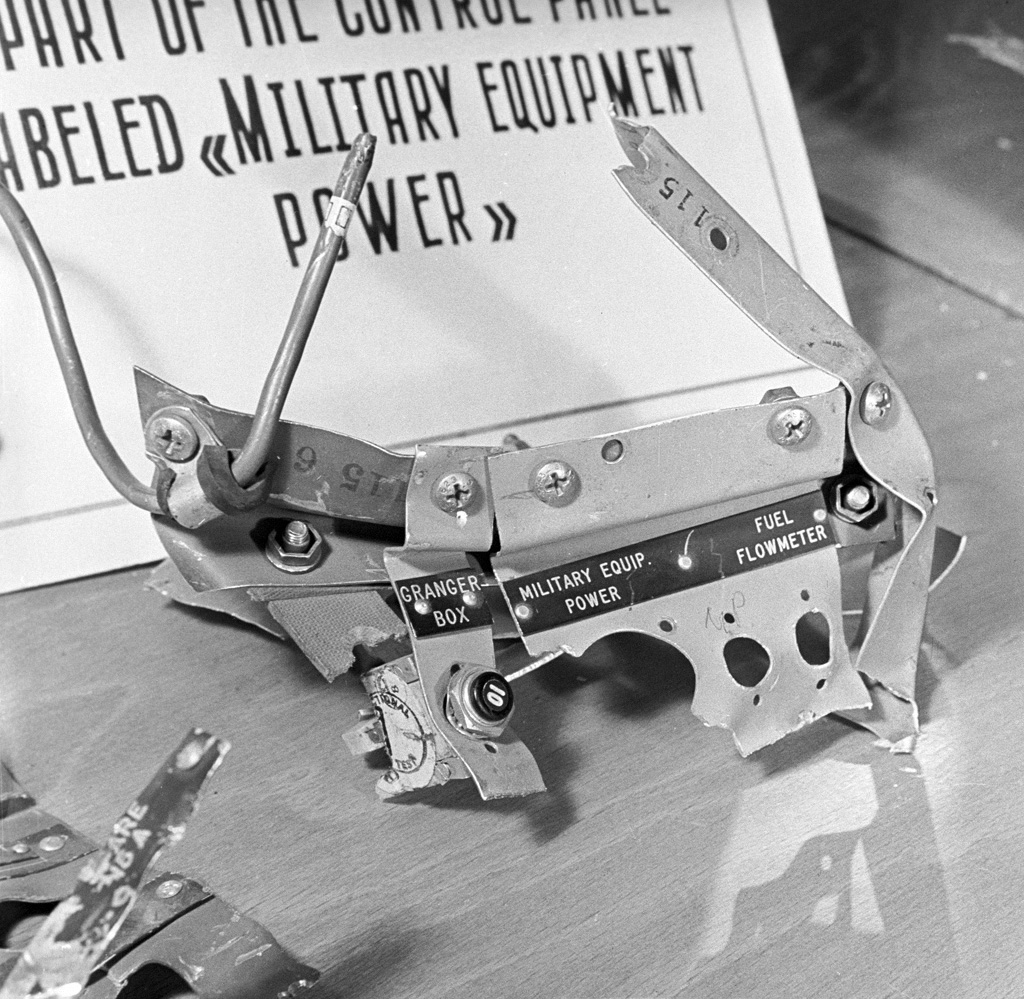
This one apparently the ELINT equipment:
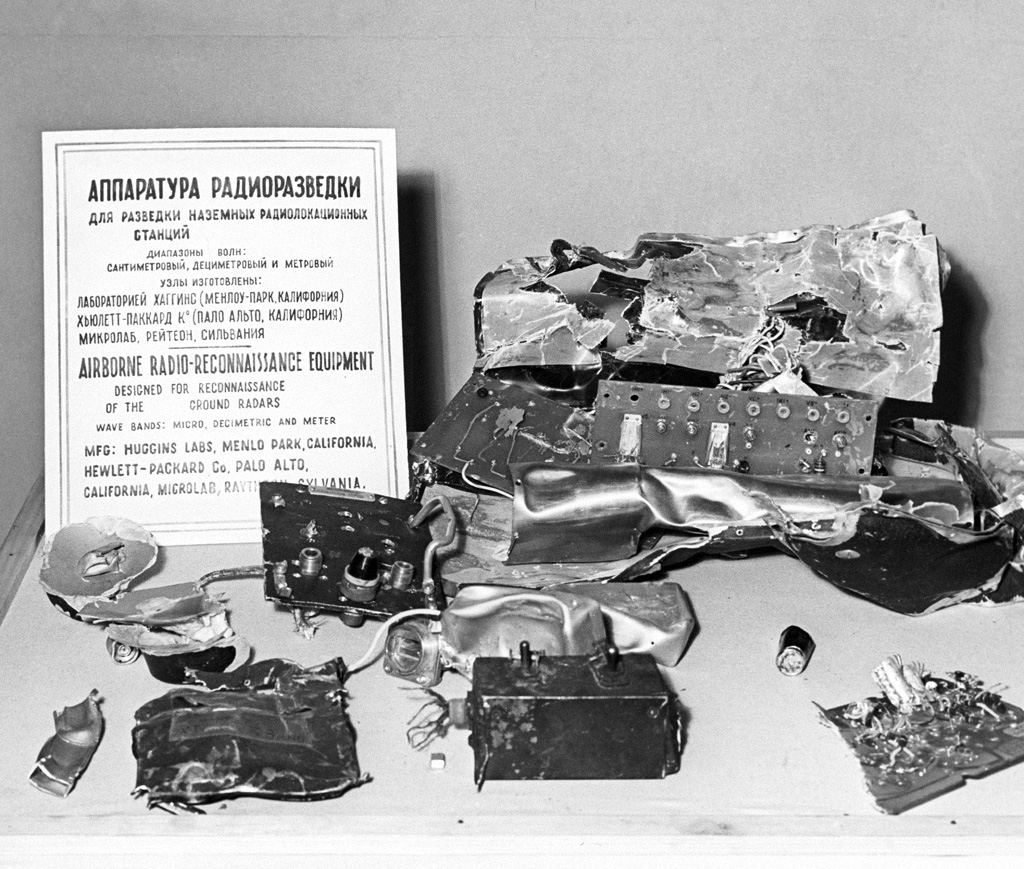
And this one apparently the data recorder:
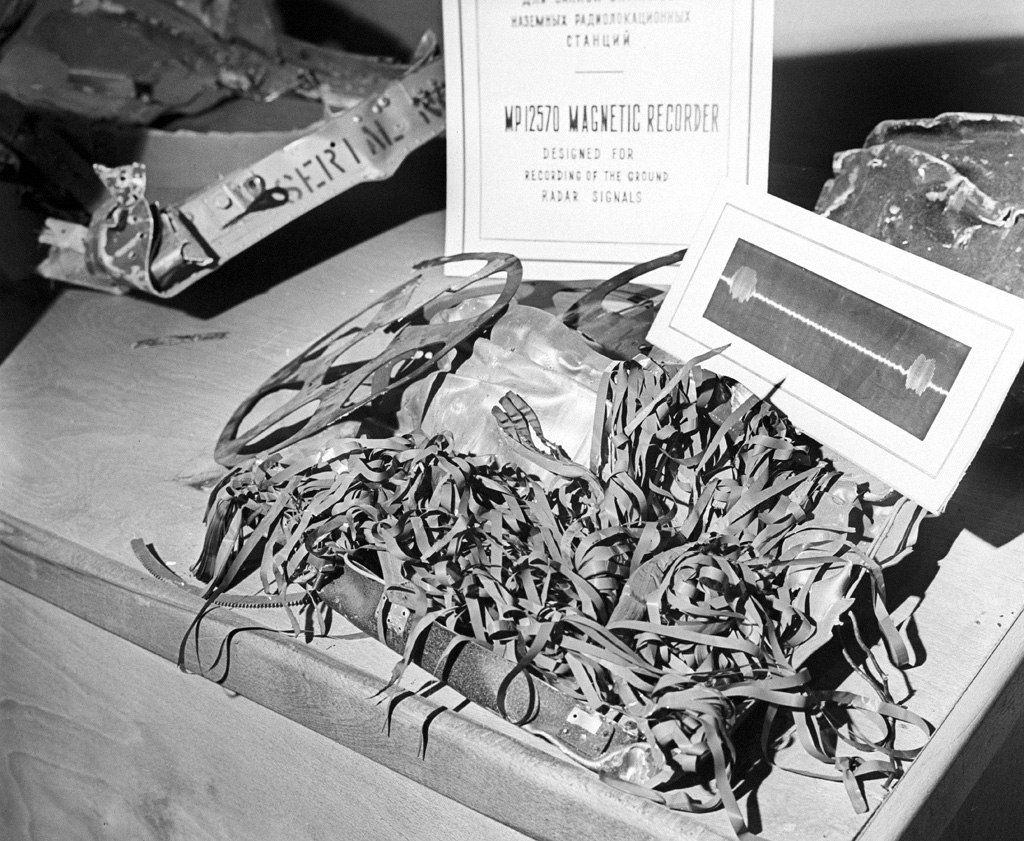
Last edited:
Interesting doc from 1957 on U-2's weight reduction and avionics. It seems that the AN/ARC-34 UHF radio, the AN/ARN-6 ADF, sextant and autopilot were an absolute must on the U-2A/U-2C.
Last edited:
- Joined
- 21 January 2015
- Messages
- 10,680
- Reaction score
- 12,332
Studying Thunderstorms with NASA’s ER-2 Aircraft:
View: https://youtu.be/qFEtaGJ-ZAs?si=2j837eVbDv4KKg3E
Related link on the ER-2:

 www.nasa.gov
www.nasa.gov
Related link on the ER-2:

NASA Armstrong Fact Sheet: ER-2 High-Altitude Airborne Science Aircraf
NASA operates two Lockheed ER-2 Earth Resources aircraft as flying laboratories in the Airborne Science Program under the Agency's Science Mission Directorate.
Scott Kenny
ACCESS: Above Top Secret
- Joined
- 15 May 2023
- Messages
- 5,965
- Reaction score
- 4,815
Man, I would not want to fly anywhere near a thunderstorm in a U2...Studying Thunderstorms with NASA’s ER-2 Aircraft:
View: https://youtu.be/qFEtaGJ-ZAs?si=2j837eVbDv4KKg3E
FighterJock
ACCESS: Top Secret
- Joined
- 29 October 2007
- Messages
- 4,220
- Reaction score
- 3,407
Same here Scott Kenny.
aonestudio
I really should change my personal text
- Joined
- 11 March 2018
- Messages
- 2,546
- Reaction score
- 5,962
View: https://twitter.com/LockheedMartin/status/1706670628424593427
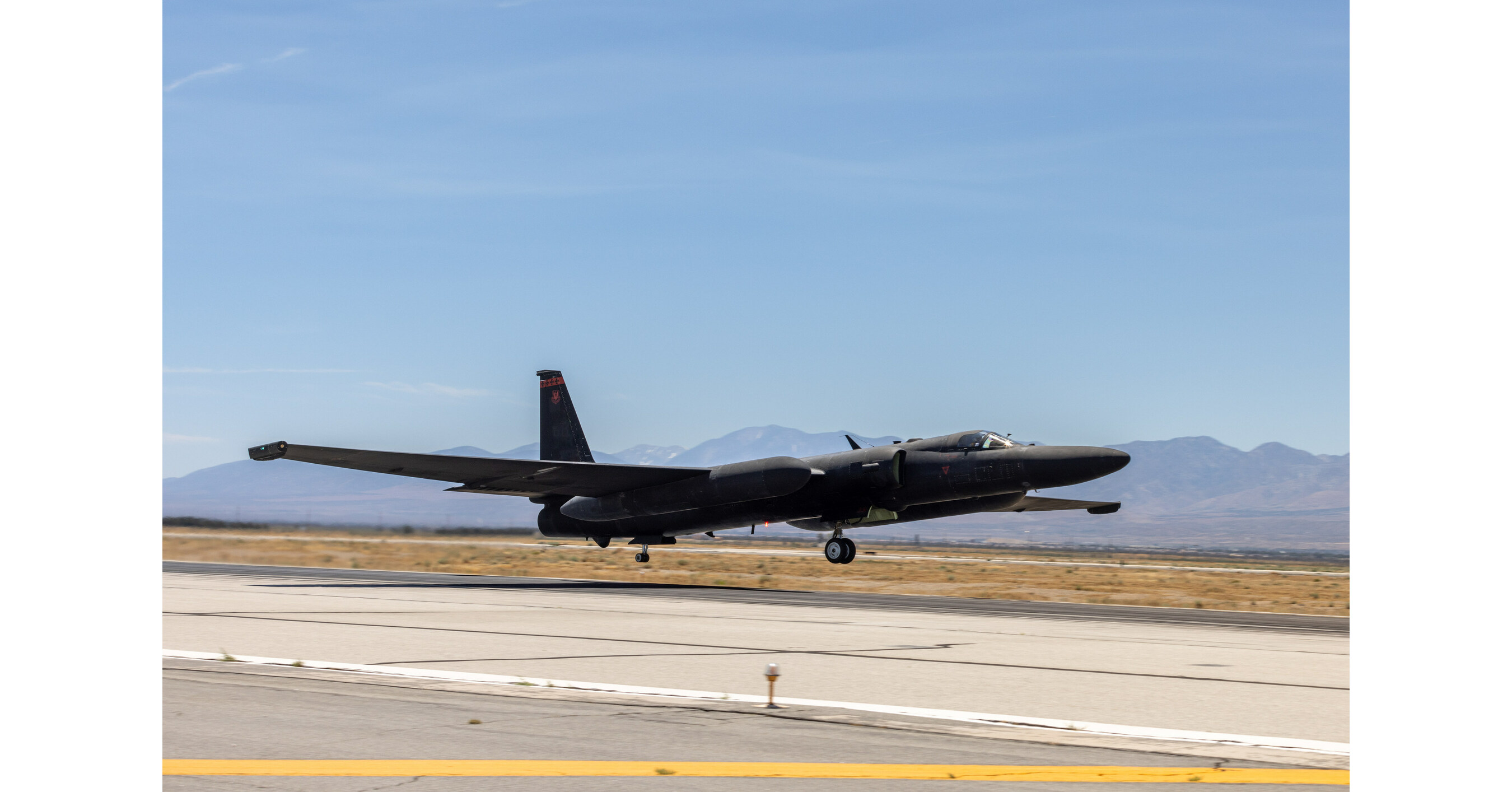
 news.lockheedmartin.com
news.lockheedmartin.com

Lockheed Martin Conducts First Flight in U-2 Avionics Tech Refresh
First flight enhances U-2 capabilities needed for the next generation battlespace. PALMDALE, Calif., Sept. 26, 2023 /PRNewswire/ -- Lockheed Martin Skunk Works® (NYSE: LMT), in partnership with...
- An updated avionics suite (communications, navigation, display, etc.) that modernizes the U-2's onboard systems to readily accept and use new technology.
- A new mission computer designed to the U.S. Air Force's open mission systems (OMS) standard that enables the U-2 to integrate with systems across air, space, sea, land and cyber domains at disparate security levels.
- New modern cockpit displays to make pilot tasks easier, while enhancing presentation of the data the aircraft collects to enable faster, better-informed decisions.
FighterJock
ACCESS: Top Secret
- Joined
- 29 October 2007
- Messages
- 4,220
- Reaction score
- 3,407
And the USAF are planning on getting rid of the Dragon Lady, that is IF congress gives it's approval or not, let's wait and see if it is the later. It will be interesting to see what happens and what replaces the DL, something along the lines of the SR-72 if it is still out there.
- Joined
- 3 June 2011
- Messages
- 17,332
- Reaction score
- 9,067
Where did you hear that?And the USAF are planning on getting rid of the Dragon Lady, that is IF congress gives it's approval or not, let's wait and see if it is the later. It will be interesting to see what happens and what replaces the DL, something along the lines of the SR-72 if it is still out there.
- Joined
- 16 April 2008
- Messages
- 8,396
- Reaction score
- 10,342
Where did you hear that?
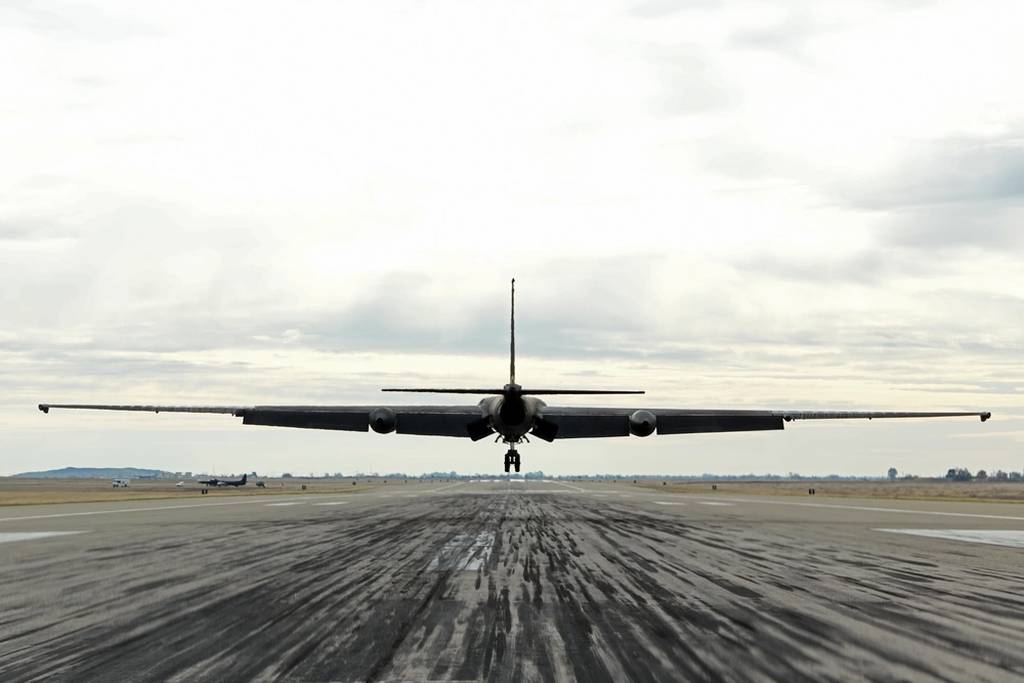
Air Force prepares to retire U-2 spy planes in 2026
Congress needs to approve the retirement plan, which has run afoul of lawmakers in the past.
FighterJock
ACCESS: Top Secret
- Joined
- 29 October 2007
- Messages
- 4,220
- Reaction score
- 3,407
I had missed that article, I had read it in Air Forces Monthly. Needless to say I was rather shocked by it.
Can't be Tagboard, too big & heavy for launch from U-2R.
Interesting tidbits -
- Plastic wings and tail
- Otto II fuel is US Navy torpedo monopropellant.
- Rocket motor. (?)
- Trapeze launch - U-2R fuselage top or wing super pod station.
- Max mission time to launch - 8 hours (cold soak requirement)
Is this Aquiline related (competitor?)
I wonder if it might be related to this:
from FY 1970 FINANCIAL PROGRAM/FY 1971 BUDGET RECOMMENDATIONSFORTUNE COOKIE:
A. On the basis of Ex Com approval for FY 1969 initiation of this drone program for the U-2's, the Agency is to provide material on the principal requirements assumptions for the cost estimates, such as the planned operational activity related to proposed quantities. In the event SAC also has a requirement for this drone, the Agency is to include both Agency and SAC under this account, in cooperation and coordination with Director D.
B. Any related Countermeasure R&D proposed funding is to be included under this account, rather than [redcated] NRO 25X1A
C. F.Y. 1970 Financial Program Recommendations:
Submit line entry requirements and costs in meaningful detail, such as quantity and costs of drone procurements, cost of drone mods, Elint system quantities and costs, test support, number and costs of technicians, spares costs, etc.
D. F.Y. 1971 Budget Recommendations:
Submit similar detail as that required for the F.Y. 1970 Financial Program Recommendations.
edit: it seems so - I don't know why I'd not noticed (or remembered) this before. From Peter Merlin's 'Unlimited Horizons':
Some test projects were almost surreal. One involved a method for dropping propaganda leaflets from 70,000 feet. Another, called Fortune Cookie, called for launching modified AQM-37 supersonic drones from wing pylons. Under the initial concept, the rocket-powered drone would be equipped with a camera and recovered at the end of its flight. Later, it was proposed that an expendable drone would collect electronic intelligence data, which could then be relayed to the U-2 or another airborne platform within range. Although test results were promising, no operational missions were undertaken.
Last edited:
Elephant walk at Beale AFB with not less than 8 TR-1:

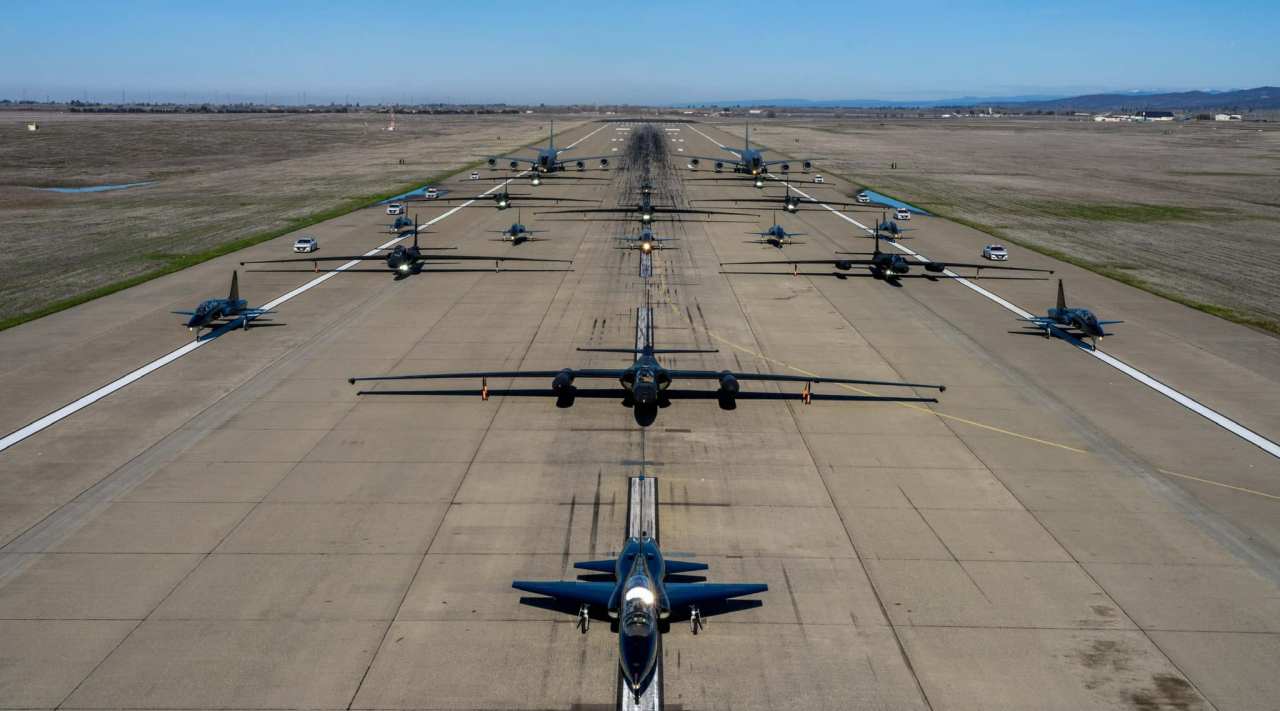
 fox40.com
fox40.com
The Jan. 4 Elephant Walk included at least 8 U-2 Dragon Lady, at least 9 T-38 Talons, two KC-135 Stratotankers and a number of U-2 pursuit vehicles.
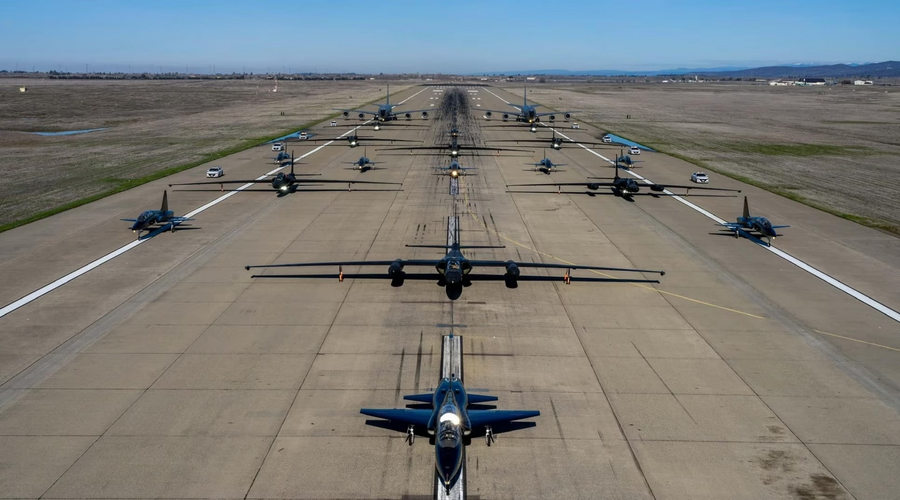

Beale Air Force Base showcases its preparedness with first ‘Elephant Walk’ in decades
(FOX40.COM) — In a show of preparedness and force, the air and ground crews of Beale Air Force Base in Yuba County performed their first “Elephant Walk” in decades on Jan. 4, acco…
 fox40.com
fox40.com
Last edited:
perttime
I really did change my personal text
- Joined
- 30 March 2013
- Messages
- 271
- Reaction score
- 233
A week ago, a U-2 was spotted over Finland, for the first time.
Photos and article in Finnish: http://www.lentoposti.fi/uutiset/u_...n_korkealla_savonlinnan_yll_3_tammikuuta_2024
Photos and article in Finnish: http://www.lentoposti.fi/uutiset/u_...n_korkealla_savonlinnan_yll_3_tammikuuta_2024
The Armored T-28 is best for hailstorms.Man, I would not want to fly anywhere near a thunderstorm in a U2...
Sterling Colgate got close to twisters in a Cessna if memory serves...and Joe Golden flew through fair-weather waterspouts.
Some thunderheads can tower over 70,000 feet. Tornadoes are often the last feature of a storm..
outflow occasionally pushing them into sunlight.
A U-2 might then follow a supercell from the southwest at a distance...though there is a danger if it is a right-turner.
Watch for positive giants/superbolts.
Similar threads
-
Lockheed Martin Skunk Works Hybrid Wing Body (HWB)
- Started by fightingirish
- Replies: 102
-
-
-
Lockheed CL-1200 / X-27 Lancer
- Started by overscan (PaulMM)
- Replies: 80
-
